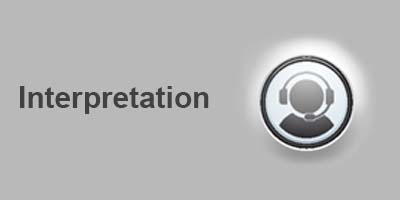
薬生薬審発0202第1号(平成29年2月2日)
ICH HARMONISED GUIDELINE- M4E(R2) – Dated 15 June 2016
Module 2.5 臨床に関する概括評価
2.5.6 ベネフィットとリスクに関する結論
2.5.6.1 治療の背景
本項では、申請医薬品の治療の背景を簡潔に記載すること。治療の背景では、治療の対象となる疾患又は症状、治療の対象となる集団、現行の治療のベネフィット及びリスクについて記載する。疾患又は症状を理解する上での重大な限界、並びに現行の治療のベネフィット及びリスクの重大な不確実性についても記載する。関連する部分集団における差異が知られている場合には、それらについて記載すること。申請医薬品に関するベネフィット及びリスクの情報を本項に記載すべきではなく、当該情報はそれぞれ 2.5.6.2 及び 2.5.6.3 項に記載すること。
Module 2.5 CLINICAL OVERVIEW
2.5.6 Benefits and Risks Conclusions
2.5.6.1 Therapeutic Context
This section should briefly discuss the therapeutic context for the medicinal product. The term ‘therapeutic context’ describes the disease or condition to be treated, the population intended to be treated, and the benefits and risks of current therapies*2. Important limitations in the understanding of the condition and uncertainties in the benefits and risks of current therapies should be discussed. If differences in relevant subpopulations are known, they should be discussed. Information on the benefits and risks of the medicinal product should not be included here, but should be discussed in Sections 2.5.6.2 and 2.5.6.3, respectively.
*2 For purposes of Section 2.5.6, the term “therapy” encompasses both pharmacologic and non-pharmacologic interventions, as well as preventive measures and diagnostics. In addition, the terms “therapy” and “treatment” are used interchangeably.
2.5.6.1.1 疾患又は症状
本項では、対象となる患者集団に最も関連する、又は重大な影響を及ぼす疾患もしくは症状の特徴(例えば、発病率、罹病期間、罹患率、死亡率、健康に関連する生活の質等)を記載すること。申請医薬品の目的とする適応症に関連する疾患の側面に焦点をあてること。必要な場合には、疾患の社会的影響又は公衆衛生への影響(例えば、感染症の不十分な予防及び管理が及ぼす影響)についても記載すること。
2.5.6.1.1 Disease or Condition
This section provides a description of aspects of the disease or condition that are most relevant to, or have the greatest impact on, the intended population (e.g., incidence, duration, morbidity, mortality, health-related quality of life). The discussion should focus on the aspects of the disease that would be covered by the proposed indication for the medicinal product. Societal or public health implications of the disease (e.g., impact of poor prevention and control of an infectious disease) should also be addressed where relevant.
2.5.6.1.2 現行の治療*2
本項では、対象となる患者集団における主要な治療法(すなわち臨床ガイドラインにおいて推奨されている治療、最もよく用いられている治療等)とともに、有効性、安全性、忍容性、利便性又は患者による選好の観点から、新たな治療の医学的必要性について記載すること。薬理学的分類の異なる治療薬が存在する疾患領域では、薬効分類によりまとめて簡潔に記載してもよい。対象となる患者集団に対し用いられる他の治療についても、これが日常診療又は臨床ガイドラインとして確立している場合には記載してもよい。当該治療には、医学的処置、手術、適応外使用されている医薬品、他の非薬物的介入(例えば、食事療法、理学療法等)が含まれる。現在用いられている治療に関する地域間の主要な違いについても記載することができる。対象となる患者集団に対して現在利用可能な治療法がない場合には、その旨を記載すること。
*2 本項においては、「治療」という用語には、薬物学的及び非薬物学的介入、予防的措置、並びに診断の意味を含む。また、therapy と treatment は同様の意味で使用している。
2.5.6.1.2 Current Therapies
This section provides a description of the major therapies in the intended population (i.e., those therapies used most frequently and/or recommended in clinical guidelines) and the medical need for a new therapy in terms of efficacy, safety, tolerability, convenience, or preference, if applicable. For disease areas that are treated by different pharmacologic classes of therapies, this analysis may be simplified by grouping and providing commentary by drug class. Other interventions used for the intended population may also be discussed when their use is supported by established clinical practice or clinical guidelines. Such interventions could include medical and surgical procedures, drugs used off-label, and other non-drug interventions (e.g., diet modifications, physical therapy). Major differences in current therapies between regions may be noted. If no therapies are currently available to treat the intended population, this should be stated.










